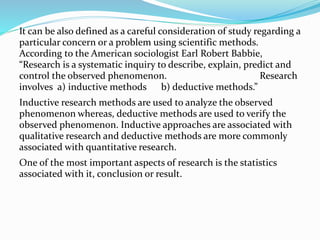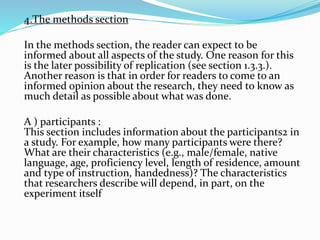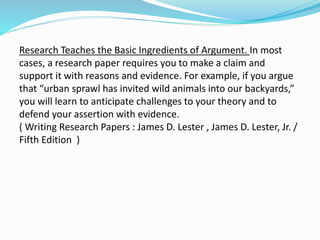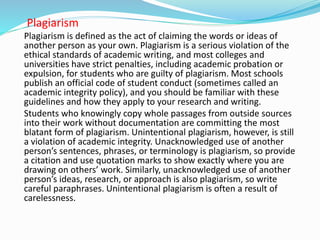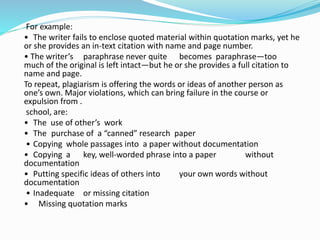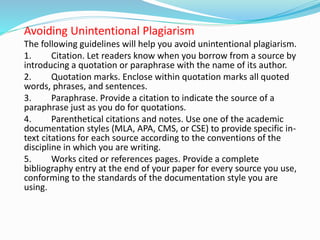This document discusses what research is and provides definitions from dictionaries. It states that research involves studying something thoroughly to find answers to questions. Research involves using systematic methods to better understand events, problems or phenomena. It can also be defined as a careful consideration of a particular issue using scientific methods. The document then discusses key parts of a typical research paper such as the title page, abstract, introduction, methods, results, discussion, references and appendix. It explains what is included in each section. Finally, it discusses some of the most important advantages of writing a research paper, including that it teaches investigative skills, inquiry-based techniques, career skills, critical thinking, logic and the basic ingredients of argument.


